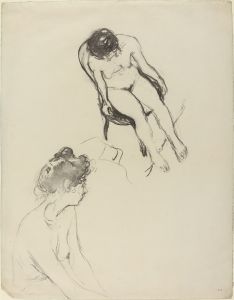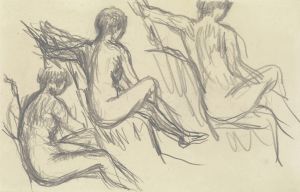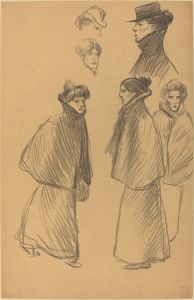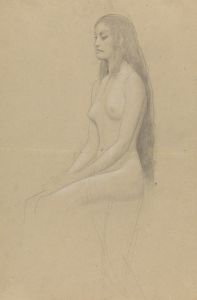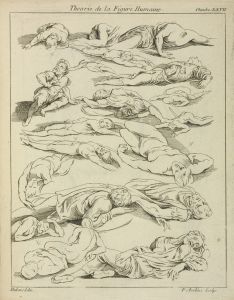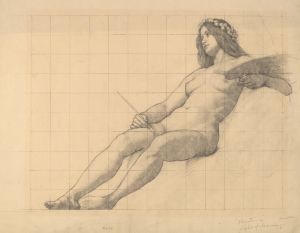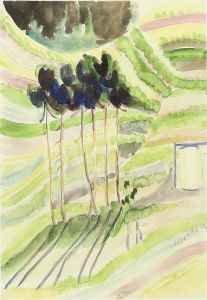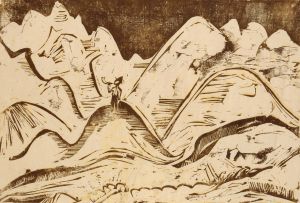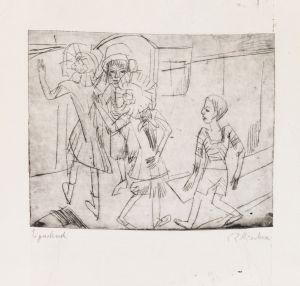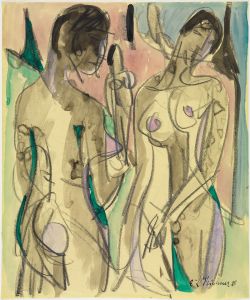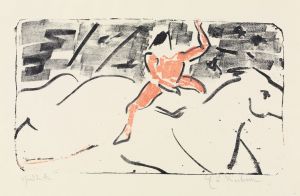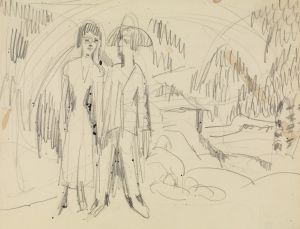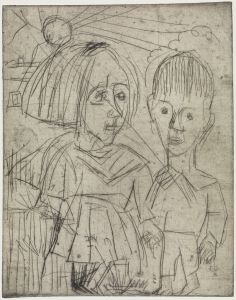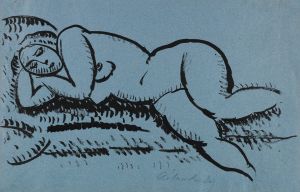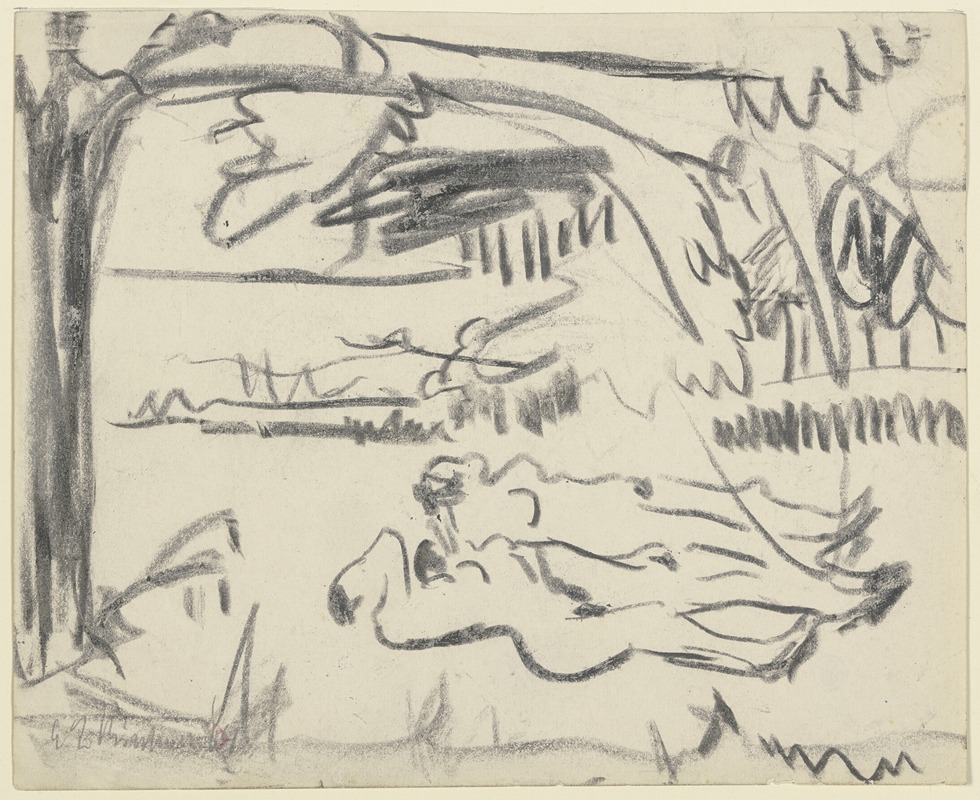
Drei liegende weibliche Akte im Freien
A hand-painted replica of Ernst Ludwig Kirchner’s masterpiece Drei liegende weibliche Akte im Freien, meticulously crafted by professional artists to capture the true essence of the original. Each piece is created with museum-quality canvas and rare mineral pigments, carefully painted by experienced artists with delicate brushstrokes and rich, layered colors to perfectly recreate the texture of the original artwork. Unlike machine-printed reproductions, this hand-painted version brings the painting to life, infused with the artist’s emotions and skill in every stroke. Whether for personal collection or home decoration, it instantly elevates the artistic atmosphere of any space.
Ernst Ludwig Kirchner, a prominent German expressionist painter, created the artwork "Drei liegende weibliche Akte im Freien" (Three Reclining Female Nudes Outdoors) during a period marked by his exploration of form, color, and the human figure. Kirchner was a founding member of the influential art group Die Brücke (The Bridge), which played a crucial role in the development of Expressionism in the early 20th century. This group sought to create a new artistic language that bridged traditional academic art and modern expression.
"Drei liegende weibliche Akte im Freien" exemplifies Kirchner's distinctive style, characterized by bold colors, dynamic compositions, and an emphasis on emotional experience over realistic representation. The painting depicts three nude women reclining in an outdoor setting, a subject that Kirchner frequently explored. His work often focused on the human body, capturing its form with a sense of immediacy and vitality. The outdoor setting in this painting reflects Kirchner's interest in nature and the idea of returning to a more primitive, unspoiled state, a theme common among Die Brücke artists.
Kirchner's use of color in this painting is particularly noteworthy. He employed a vivid palette to convey mood and emotion, rather than to depict the scene realistically. The colors are expressive and serve to heighten the sense of movement and life within the composition. This approach to color is a hallmark of Kirchner's work and reflects the broader Expressionist movement's focus on subjective experience.
The composition of "Drei liegende weibliche Akte im Freien" is dynamic, with the figures arranged in a way that guides the viewer's eye across the canvas. Kirchner's brushwork is energetic and loose, contributing to the sense of spontaneity and immediacy. This technique allows the viewer to engage with the painting on an emotional level, rather than simply observing it as a static image.
Kirchner's depiction of the female nude is both a celebration of the human form and a commentary on contemporary society. By placing the figures in a natural setting, he contrasts the freedom and vitality of the human body with the constraints of modern life. This theme of liberation and a return to nature is central to much of Kirchner's work and reflects the broader goals of the Die Brücke movement.
Throughout his career, Kirchner faced numerous challenges, including the impact of World War I and the subsequent political and social upheavals in Germany. Despite these difficulties, he remained committed to his artistic vision, continually exploring new ways to express the complexities of human experience. His work, including "Drei liegende weibliche Akte im Freien," has had a lasting impact on the development of modern art and continues to be celebrated for its innovative approach and emotional depth.
In summary, "Drei liegende weibliche Akte im Freien" is a significant work within Ernst Ludwig Kirchner's oeuvre, showcasing his mastery of color, form, and composition. It reflects the core principles of the Expressionist movement and offers insight into Kirchner's artistic philosophy. Through this painting, Kirchner invites viewers to engage with the emotional and spiritual dimensions of the human experience, challenging them to see beyond the surface and explore the deeper meanings within his art.





